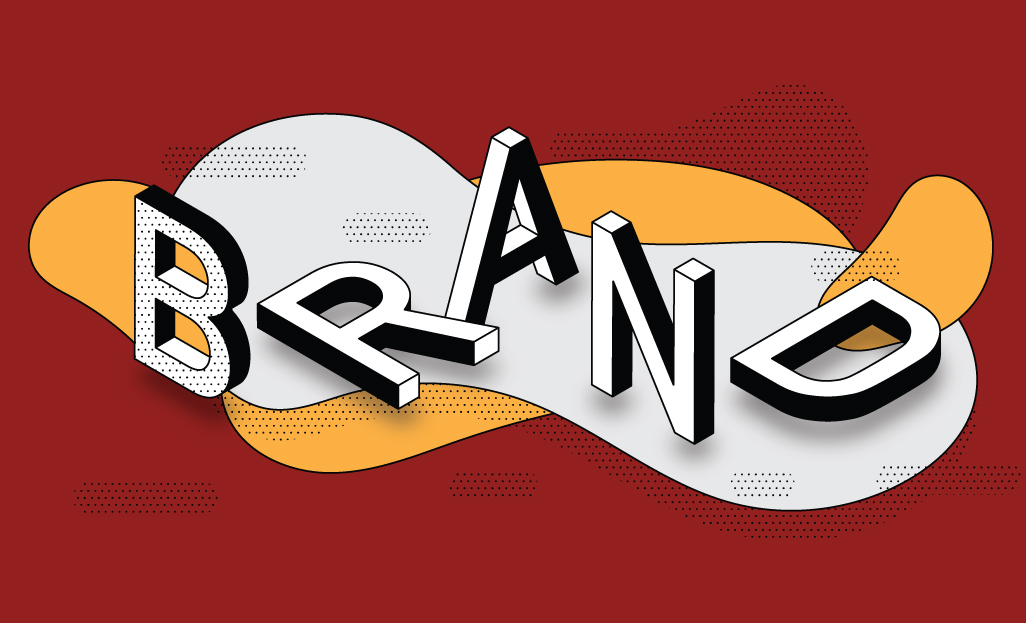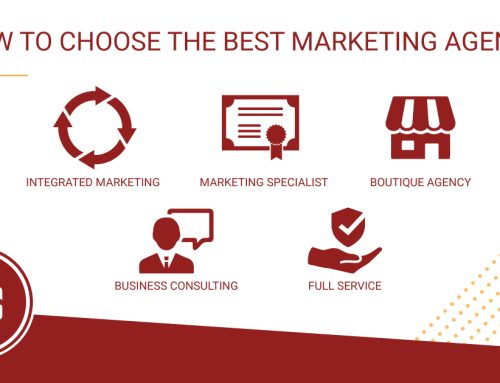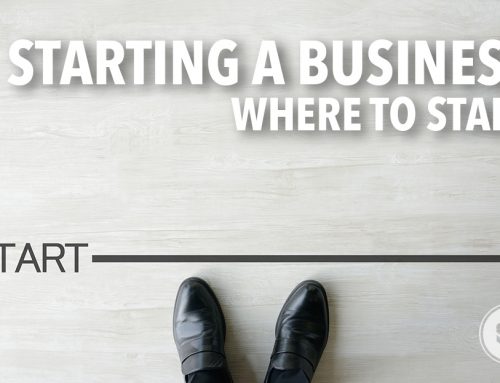The best customer-brand relationships are built on three foundational pillars: communication, consistency, and trust. The third pillar will naturally fall into place if you can deliver on the first two. After all, consistent communication is the best way for people to get to know your brand and to know a brand is to love a brand.
If you just asked yourself, “How do I get my customers to love my brand,” know that you must first establish a strong brand identity. What exactly is a brand identity?
HubSpot explains that brand identity is made up of what your brand says, what your values are, how you communicate your product, and what you want people to feel when they interact with your company. Essentially, it’s the personality of your business and a promise to your customers.
A well-thought-out brand identity not only communicates a color scheme and logo but what your business believes in and is setting out to achieve over time. If you’re ready to roll up your sleeves and put in the time, the following three-part process will help you create a brand identity that you, your employees, and your customers will love.
Step 1: Research
We all think we know our competitors and target customers, but unless we take the time to perform in-depth research, we’re basically taking a ‘finger in the air’ approach to the process. Thoroughly analyzing your direct and indirect competition – their UVPs, product and service suite, pricing models, and target audiences will give you glaring insights into what you’re up against and more importantly, how you can differentiate your business in the marketplace. Additional market research in the form of a Situational Analysis is highly recommended and will greatly benefit your brand marketing in the long run. At the very least, complete a SWOT analysis to examine your strengths, weaknesses, opportunities, and threats to determine what characteristics you want to highlight in your brand.
As far as your target audience goes, developing unique customer personas will help you focus on who you want your brand to connect with and how to tell a story that addresses their unique pain points and needs. You may be wondering how many customer personas you should have. The answer is that it depends on the complexity of your business and how many different types of people and industries you serve. A quick Google search finds that most businesses have between three and eight customer personas. HubSpot suggests that when creating your customer persona(s) consider including customer demographics, behavior patterns, motivations, and goals. The more specific you can be with your personas, the better you can understand how to communicate with them.
Step 2: Essence
Once you have your market research under your belt it’s time to work on your brand’s essence. Your brand essence breathes life into your brand and gives it that certain je ne sais quoi. It is made up of many different components including:
- Purpose, Mission, and Vision
- Values and Attributes
- Positioning
- Benefits
- Unique Value Proposition
Purpose, Mission, and Vision
To put it simply, think of your purpose, mission, and vision as your why, how, and where. Your why is a critical component of your brand because if you want potential customers to believe in you, you must first give them a reason to.
Once you have a concisely written purpose, you can next articulate your mission. If your purpose is your ‘why,’ your brand’s mission communicates how you’re carrying out your purpose daily. Lastly, your vision is your ‘big picture’ idea or ideas revolving around where you see your business going in the future and the mark you wish to make on the world. In short, your why, how, and where should tell the story of why you do what you do, how you’re doing it, and where you’re going.
Values
Your brand values aren’t just a made-up list of things you think will make you and your business look good. They are your core beliefs and represent what’s important to you and what you will live and work by day in and day out. Craft your values carefully as they’re not just for creating your brand identity, they’re to be adopted and embraced by every team member and person who represents your company. Actionable values will empower your team to do right by your brand and help them communicate your beliefs through their words and actions. Meta is a great example of a company with six actionable values: Move Fast, Focus on Long-Term Impact, Build Awesome Things, Live in the Future, Be Direct and Respect Your Colleagues, and Meta, Metamates, Me.
Attributes
On a deeper level, lie your brand attributes – the core characteristics of your brand. They can be derived from your values but are a unique set of qualities that you want your customers to come to know you by. A great example to reference is Jeep. For over 75 years the iconic brand has been linked to freedom, adventure, authenticity, and passion. Most people wouldn’t associate Jeep with an attribute like ‘luxury’ just as you wouldn’t connect your brand with qualities that don’t speak to who you truly are as a company.
Along with your purpose, mission, and vision, your values and attributes serve as a solid foundation for your company culture. Who knew you were performing two exercises in one?! In all seriousness, your employees are your greatest asset. They aren’t just the first to become champions of your brand, they ARE your brand. Inspire them with your why, how, and where, engage them with strong, ethical values and watch your brand promise come to life!
Positioning
According to the Branding Journal, brand positioning has been defined by American marketing expert, Philip Kotler as “the act of designing the company’s offering and image to occupy a distinctive place in the mind of the target market.” Typically used as an internal document, format your brand positioning statement to explain what you do, whom you do it for, and how they benefit.
Benefits
Speaking of benefits, your brand benefit ladder is the next step on your brand identity creation journey. Your brand benefit ladder will help you discover the functional and emotional benefits of your products and services and will identify how to communicate your most important features to your target customers. There are several different types of brand benefit ladders you can build but the most standard ladder consists of the following four steps:
- Define your target customer
- List your brand features
- List your functional benefits (what customers get)
- List your emotional benefits (how customers feel)
It’s important to focus on those features that make you unique in the marketplace when building out your brand benefit ladder. In doing so, you can ensure your future marketing will stand out and connect with your customers on an emotional level. Here’s a great LinkedIn article from marketing expert Graham Robertson on how to find your brand’s fuctional and emotional benefits by creating a proper brand benefit ladder.
Unique Value Proposition
Your unique value proposition (UVP), aka unique selling proposition, is found at the intersection of what your customers want and what your business does best. It’s yet another concise statement you’ll need to compose that clearly explains who (or what) you are and what makes you different. Think of your unique value proposition as your brand’s headline, oftentimes being the first line of big, bold text on a website’s homepage, but it doesn’t end there. Once you arrive at your stellar UVP, you’ll want to consistently communicate it across all marketing channels from sales and social media, to print and paid campaigns.
Step 3: Identity
Alas, we have made it to the third and final step of creating your brand identity and that is…your identity! Not to be confused with the overarching brand identity you will finalize in this phase, identity in this sense of the phrase is the personality, behaviors, visual, and verbal aspects of your brand. Everything you have accomplished throughout your brand exploration to this point will go into refining your brand’s identity. A solid approach to this phase is to think of your brand as a person and create a core framework for the following identity components:
- Personality – Adjectives that describe your brand
- Behaviors – How you and your team members act
- Language – Adjectives that describe the words you use
- Tone of Voice – Adjectives that describe how your words come acros
Visible Brand Elements
When all is said (so to speak) and done, it’s time to move on to your visible brand elements. These tangible elements should be the final piece of creating your brand identity as you will take all of the above into consideration when choosing your fonts and color palette and designing your logo. After all, these elements of your brand identity should be a perfect representation of your brand’s essence and personality and, if done well, resonate with your primary customer persona(s).
Like any creative process, you will go through several iterations and collaborate with colleagues along the way. If you are a solopreneur, share your work with a mentor, friends, or family members and be open to their feedback, and willing to make adjustments to make your brand identity crystal clear.
Brand Book
When you are happy with your end product, it is time to create your brand book. Your brand book tells the story of your brand and provides the blueprints for how it is to be projected out into the world. It will include an overview of your brand identity and outline how to use your design elements. Whether you have an in-house marketing and design team or plan to outsource this work, your brand book will be critical in ensuring your brand is communicated consistently whenever and wherever it is published.
Once you have completed your brand book, pat yourself on the back and take a breather because now the real work begins. Beyond this point, you have additional marketing collateral to create, such as your website, social media accounts, email, business cards – the list goes on and on. By having a solid understanding of who you are as a brand, you can be confident that you can seamlessly implement your brand identity in a way that your team and your customers will recognize and love.





